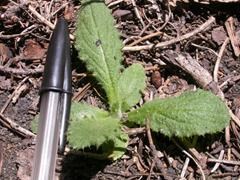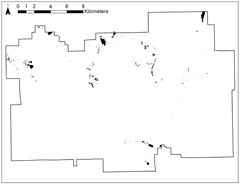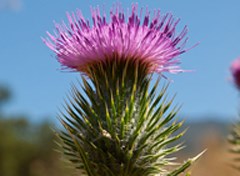
Plant Description
Bull thistle (Cirsium vulgare) is a biennial, herbaceous, taprooted plant up to 6 ft (1.8 m) tall. Plants often have a single, heavily branched stem armed with spiny wings between the leaves. The dark green leaves are up to 12 in (31 cm) long, rough-textured, hairy, and bear long spines on their margins. Flowers develop at the top of the plant from July through September. The purple flower heads are 1.5 in (4 cm) in diameter and 1-2 in. (2.5-5 cm) long with narrow, spine-tipped bracts. Bull thistle is native to Europe, western Asia, and northern Africa. It is thought to have been introduced to the eastern United States during colonial times and the western United States in the late 1800s.

Habitat and Park Distribution
Bull thistle occurs throughout Lassen Volcanic NP, predominately under 7,000 ft elevation in yellow pine forests, lodgepole pine forests, mixed conifer forests, meadows, and willow thickets. Bull thistle needs both soil moisture and excessive sunlight, making it most common on stream and lake margins in burned areas, developed areas such as campgrounds, and road crossings.

By Franco Folini from San Francisco, CA Ecology and Reasons for Concern
Bull thistle can invade almost any type of disturbed area, such as forest clearcuts, burned areas, developed areas, etc. Its plants form dense thickets, displacing other vegetation. The spiny nature of the plant renders it unpalatable and impassable to wildlife. Dense stands therefore often slows the recovery of native vegetation following fire or other major disturbances. Over time, as taller woody plants recover and shade the ground, bull thistle is replaced by native herbaceous vegetation and plant litter. Lassen Volcanic NP uses fire as a tool to restore and maintain low-elevation forests, burning the understory every 10 to 20 years. This results is an open canopy and a sunny, disturbed ground surface ideal for bull thistle. The seed of bull thistle remains viable for only a few years, but structures similar to those on dandelion seeds enable new bull thistles to drift downwind into the park. What's more, one individual plant can produce up to 5,000 seeds, making it quite prolific. Read about the presence and treatment of bull thistle after the 2012 Reading Fire.
|
Last updated: February 28, 2015
